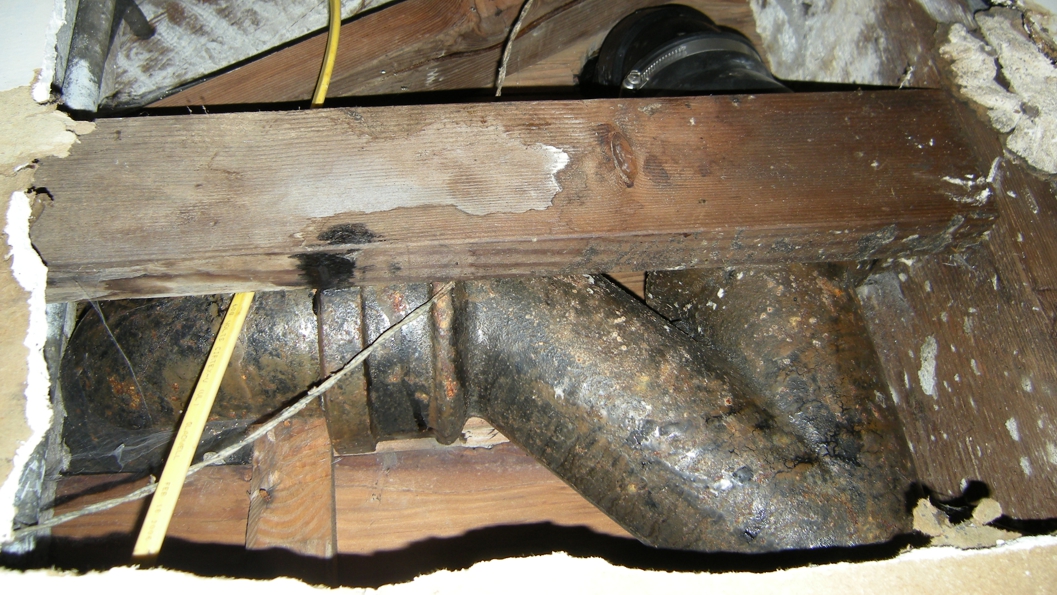Introduction
Cast iron pipes, once the backbone of plumbing systems, have stood the test of time. However, like any material, they are prone to aging, corrosion, and damage. When issues arise, neglecting repairs can lead to catastrophic consequences, including burst pipes, leaks, and flooding. This guide will provide an in-depth understanding of cast iron pipe repair, empowering you to tackle the task effectively.

Image: customplumbingaz.com
Cast Iron Pipes: An Overview
Cast iron pipes were widely used in plumbing systems due to their durability and corrosion resistance. However, with time, these pipes can develop pinholes, rust, or become damaged, compromising their integrity. These pipes are prone to a phenomenon called graphitization, where the iron degrades, weakening the pipe structure. Repairing cast iron pipes requires specialized techniques and materials to ensure a reliable and leak-free restoration.
Methods of Cast Iron Pipe Repair
There are several methods for repairing cast iron pipes, each with its own strengths and applications. The most common techniques include:
1. Epoxy Pipe Lining
Epoxy pipe lining involves inserting an epoxy-coated liner into the damaged pipe. The liner is then inflated with steam or hot water, bonding to the pipe’s interior and creating a seamless seal. This method is suitable for extensive damage or corrosion and can restore the pipe’s flow capacity.

Image: carineamaris.blogspot.com
2. Pinhole Repair Clamps
Pinhole repair clamps are used to seal small leaks or pinholes in cast iron pipes. These clamps consist of stainless steel bands fitted with rubber gaskets. The clamps are tightened around the leak, compressing the gasket to create a watertight seal.
3. Pipe Patching
Pipe patching is a technique used for more significant damage or holes. A prefabricated patch is secured over the damaged area using epoxy or other adhesive materials. This method provides a reliable and long-lasting repair.
4. Pipe Replacement
In cases where the damage is severe or unrepairable, pipe replacement may be necessary. Replacing cast iron pipes with newer materials like PEX or PVC involves cutting out the damaged section and installing the new pipe. This method is more invasive but ensures a complete restoration of the plumbing system.
Benefits of Cast Iron Pipe Repair
Repairing cast iron pipes offers several advantages over replacing them:
- Cost-effective: Repairs are significantly less expensive than full pipe replacements.
- Non-invasive: Most repair methods are non-invasive, minimizing disruption to your home.
- Extends pipe lifespan: By addressing issues promptly, repairs prolong the lifespan of your cast iron pipes, reducing the risk of future problems.
- Prevents major damage: Timely repairs prevent small issues from escalating into catastrophic leaks or bursts.
- Improves plumbing efficiency: Repaired pipes restore optimal water flow and pressure, reducing water usage and energy costs.
FAQ on Cast Iron Pipe Repair
Q: What are the signs of damaged cast iron pipes?
A: Signs include leaks, rust, pinholes, strange noises, or reduced water pressure.
Q: How long do repaired cast iron pipes last?
A: Well-maintained repairs can extend the lifespan of pipes by 15-25 years or more.
Q: Can I repair cast iron pipes myself?
A: While some repairs, like pinhole clamps, can be DIY projects, complex repairs should be left to licensed plumbers.
How To Fix Cast Iron Pipe
Conclusion
Cast iron pipe repair is a critical aspect of maintaining a functional plumbing system. By understanding the different repair methods available, you can make informed decisions about restoring your pipes to optimal condition. Whether it’s a small pinhole leak or a more substantial issue, prompt repairs can prevent major damage, extend the life of your pipes, and ensure a reliable water supply for you and your family.
Call to action: If you suspect issues with your cast iron pipes, don’t hesitate to contact a qualified plumber for an inspection and repair estimate.